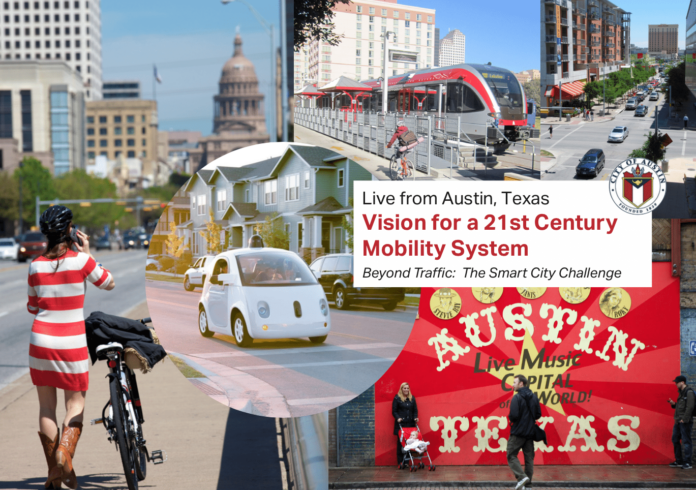$50 million in federal smart city funding up for grabs
AUSTIN, Texas – One of seven finalists in the U.S. Department of Transportation Smart City Challenge, Austin, Texas, hopes to win $50 million to solve myriad traffic and mobility challenges by implementing smart city technologies.
Earlier this month, DOT Secretary Anthony Foxx announced the seven finalist cities during the city’s iconic South by Southwest Interactive exhibition. Each of the seven finalists, culled from an initial group of 78 applicants, are set to receive $100,000 to further develop plans to integrate sensors, connected vehicles, self-driving cars and other intelligent traffic infrastructure. The other finalists include Columbus, Ohio; Denver; Kansas City, Missouri; Portland, Oregon; and San Francisco.
According to the city’s plan, Austin has an acute need for smart transport solutions due to its rapid growth, which the document pegs as “the fastest-growing mid-size city in the U.S.,” with a regional population of 1.8 million and a 2.8% growth rate. Specific challenges the city says could be addressed with DOT funding are traffic, particularly along the notoriously packed Interstate-35 parking lot through downtown, along with sprawl, safety, climate change, emissions and economic disparity.
On that last item, the city wrote: “Our community faces significant economic disparity. We recognize that daily life is a struggle for many people – especially for our low-income residents, whoa re disproportionately female and people of color. Austin is a diverse ‘majority minority’ city and the most economically segregated large metro area in the U.S., according to a recently released study by the Martin Prosperity Institute. In Travis County, Hispanics (now about 35% of the population and growing) are 3.4-times more likely than whites to be living in poverty; African Americans are 2.8 times more likely.”
Instead of being car-dependent, the city wants to use DOT funding to incorporate “on-demand automated electric vehicles, transit, biking, shared and on-demand vehicle and other options. Prime sites once devoted to parking garages have redeveloped as mixed-use projects with homes. On the major corridors of the city, automated and electric vehicles and drones zip along; they interweave alongside personal vehicles through intersections with minimal need to stop and wait for a traffic light.”
Transit corridors would connect “activity centers” close to “travel access hubs.”
One way to drive innovation, according to the plan, is to find synergies with existing stakeholders, including the booming local tech scene and the University of Texas at Austin.
The city lays out five specific goals:
- Implement automated and connected vehicles in a variety of settings, helping solve a number of mobility challenges and demonstrating their safe and efficient benefits to citizens.
- Mainstream the acceptance and usage of electric vehicles to lower traveler costs and reduce emissions in the city.
- Collect more robust data to make operating decisions and traveling decisions in real time.
- Put transportation options and access where people need it.
- Make traveling on different services effortless, with payments that are affordable and easy for travelers.

